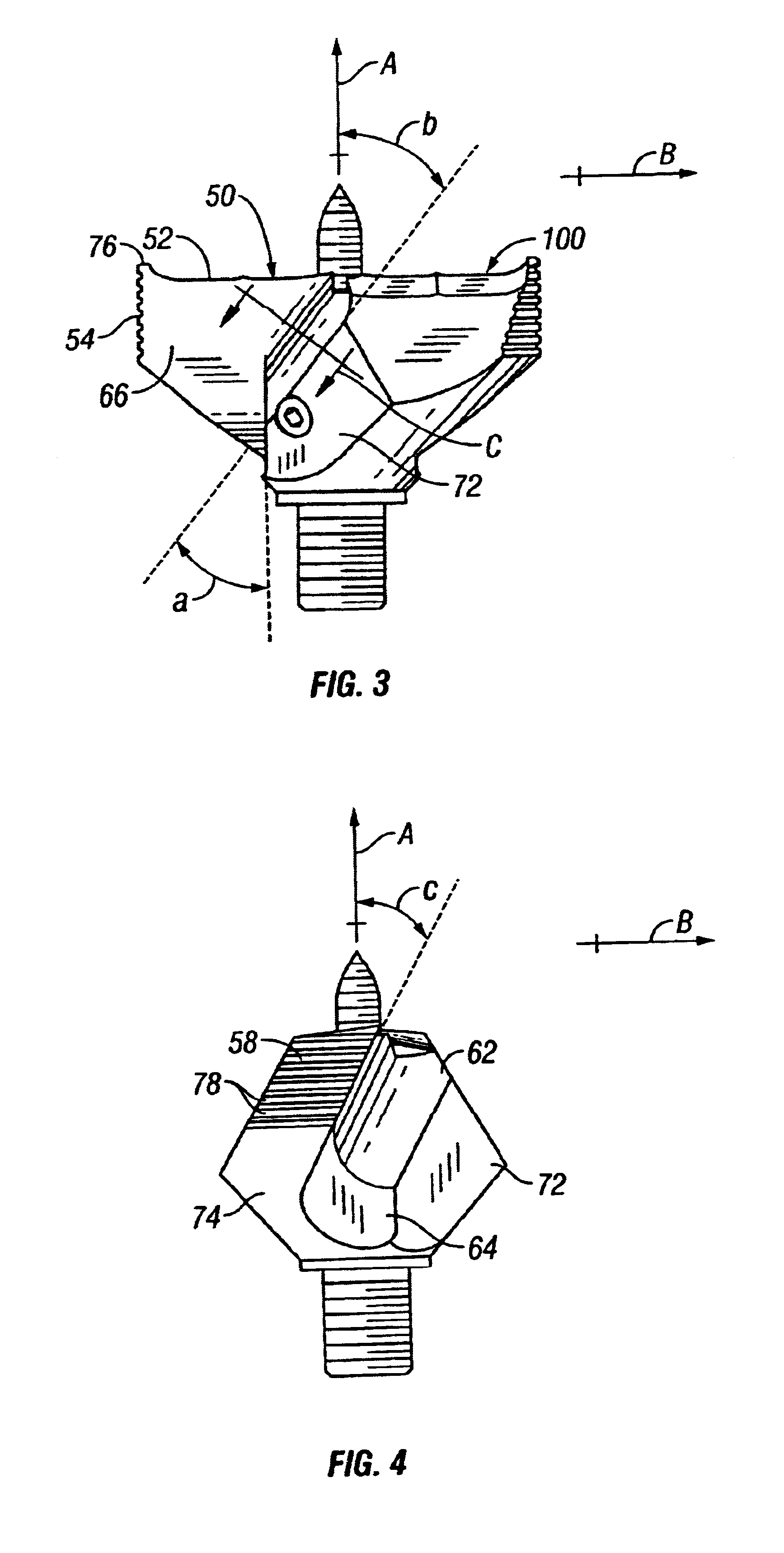Drill bit apparatus and method of manufacture of same
a technology of drill bit and machine tool, which is applied in the direction of manufacturing tools, twist drills, wood boring tools, etc., can solve the problems of insufficient self-feeding of conventional self-feeding drill bits, and inability to produce smooth workpiece bores
- Summary
- Abstract
- Description
- Claims
- Application Information
AI Technical Summary
Benefits of technology
Problems solved by technology
Method used
Image
Examples
first embodiment
the cutting head 32 is shown and described in FIGS. 3 through 9. This embodiment is adapted to produce a workpiece bore which has a diameter of approximately 1.75 inches. As shown in FIG. 3, the cutting head 32 of the first embodiment includes a first cutting vane 50 and a second cutting vane 100. The first cutting vane 50 and second cutting vane 100 are substantially identical. Further, the cutting vanes 50,100 are oriented about an axis of rotation, defined by line A, so as to be radially positioned 180 degrees apart.
The first cutting vane 50, as shown in FIGS. 3, 4, 5, 6 and 7, includes a first cutting edge 52, a second cutting edge 54, an upper surface 56, an outside surface 58, a first inside surface 62, a second inside surface 64, a front surface 66 which extends substantially parallel to a trailing surface 68, and a grasping surface 72. The first cutting edge 52 is formed by the intersection of the upper surface 56 and front surface 66. The second cutting edge 54 is formed by...
second embodiment
the drill bit head 30 is shown and described in FIGS. 10 through 16. This embodiment is adapted to produce a workpiece bore which has a diameter of approximately 0.875 inches. As shown in FIG. 10, the cutting head 32 of the second embodiment includes a first cutting vane 150 and a second cutting vane 200. The first cutting vane 150 and second cutting vane 200 are substantially identical. Further, the cutting vanes 150,200 are oriented about an axis of rotation, defined by line A, so as to be radially positioned 180 degrees apart.
The first cutting vane 150, as shown in FIGS. 10 through 14, includes a first cutting edge 152, a second cutting edge 154, an upper surface 156, an outside surface 158, an inside surface 162, a front surface 164 which extends substantially parallel to a trailing surface 166, a grasping surface 168, a substantially flat first side surface 172 and a rounded second side surface 174. The first cutting edge 152 is formed by the intersection of the upper surface 1...
PUM
| Property | Measurement | Unit |
|---|---|---|
| acute angle | aaaaa | aaaaa |
| acute angle | aaaaa | aaaaa |
| angles | aaaaa | aaaaa |
Abstract
Description
Claims
Application Information
 Login to View More
Login to View More - R&D
- Intellectual Property
- Life Sciences
- Materials
- Tech Scout
- Unparalleled Data Quality
- Higher Quality Content
- 60% Fewer Hallucinations
Browse by: Latest US Patents, China's latest patents, Technical Efficacy Thesaurus, Application Domain, Technology Topic, Popular Technical Reports.
© 2025 PatSnap. All rights reserved.Legal|Privacy policy|Modern Slavery Act Transparency Statement|Sitemap|About US| Contact US: help@patsnap.com



